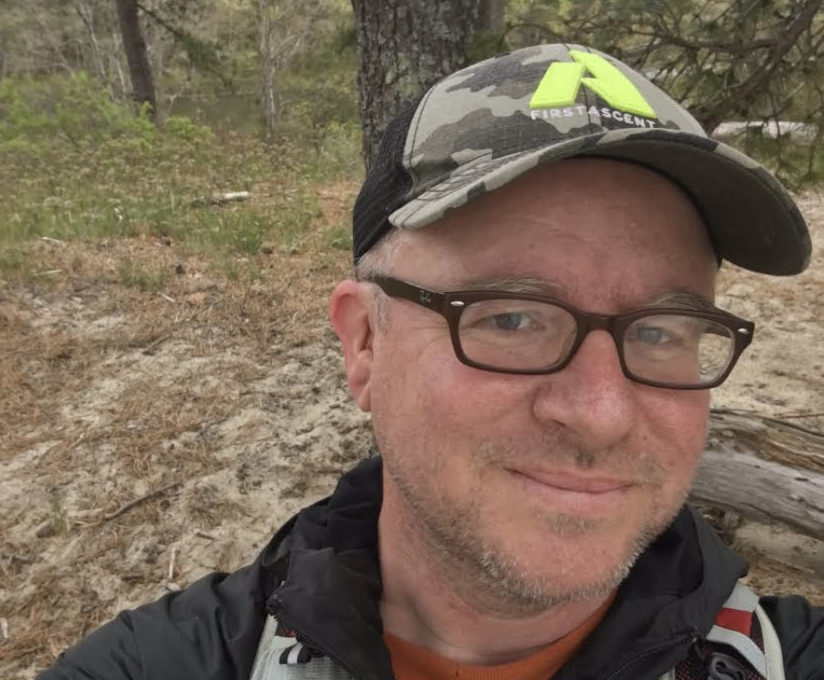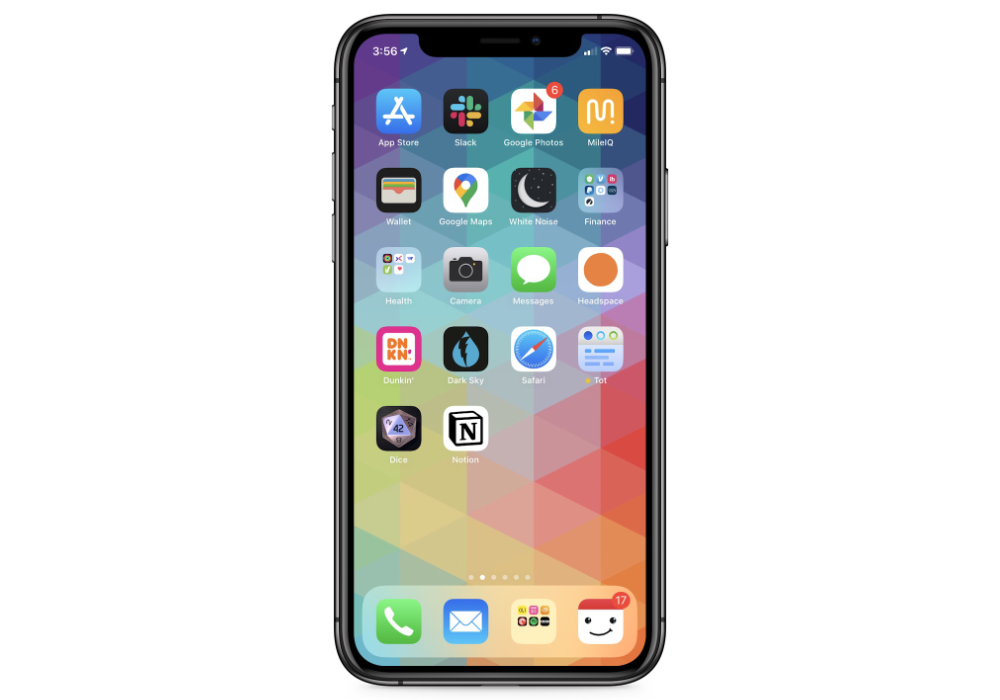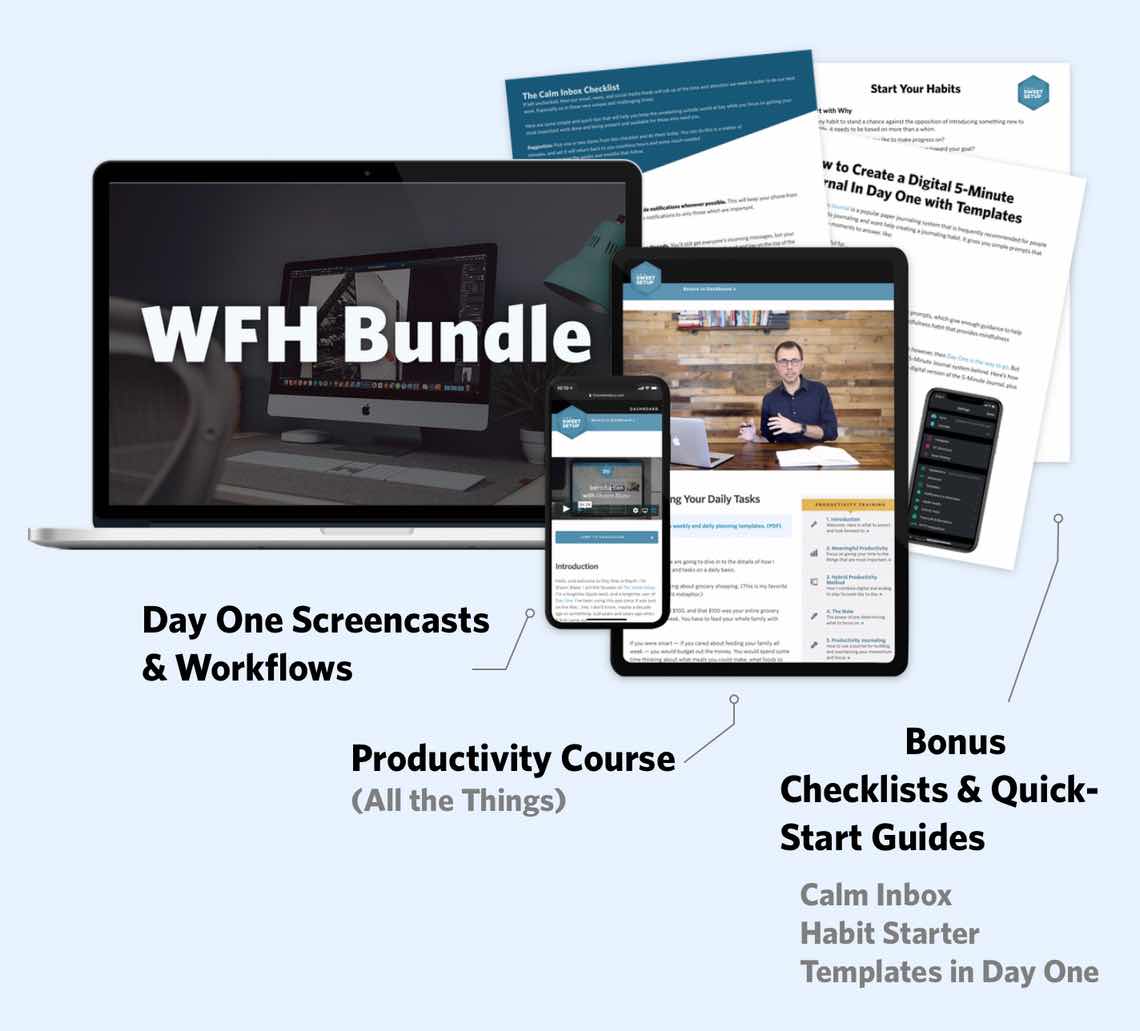How Dave Caolo Makes Apps Earn Their Way onto His Home Screen
In this Mindfulness Monday post, podcast and D&D enthusiast Dave Caolo joins us to talk about resisting the pull of social apps, his unique approach to apps earning their way onto his Home screen, and what baking cookies from scratch can teach us about focus and intentionality with our tech.
Meet Dave Caolo
Dave Caolo is the co-host of Home Work, a weekly advice podcast for people who work from home. He is also the co-founder of Reboot Game Lab where he hosts an online D&D club for adventurers of all ages and ability levels.

I’ve worked with Dave on several productivity-based projects over the years and always felt he was a kindred spirit on his own quest for focus and intentionality. I was also a former guest of his on the Home Work podcast, which he recently rebooted after a four-year hiatus (the timing couldn’t be better).
I asked Dave if he’d be willing to come share some details about his own mindful approach to technology.
What sort of boundaries or intentional constraints (i.e. rules) have you set up around how you use your technology?
Over the past few months, I really became concerned about how much time I spend looking at screens. Of course, anecdotal information is one thing (“I feel like I’ve been using my phone a lot lately”) and empirical evidence is another. So I set Apple’s Screen Time app to send me weekly summaries and I was not happy with the numbers I was seeing. So, I removed all social apps from my phone: Twitter, Facebook, Instagram, Discord. I’m looking at my phone significantly less because, it turns out, I was spending most of my phone time with those apps.
What does your iPhone home screen look like? How has the application of your intentional constraints shaped what shows up here?

Yeah, a few years ago I started the practice of letting apps “earn” their way to the home screen. That is to say, if I find myself swiping to find a particular app over and over, I’ll move it to the home screen. I like this better than guessing what ought to be there. It reduces visual clutter and ensures that only the few apps I need are the ones I see when I wake my phone.
As you apply intentionality to your use of technology, what are some examples of what you consider to net positives technology uses?
I enjoy the ease with which I’m able to communicate with friends and family. My parents, my sisters (and their husbands) and I all live in different states. We’re physically together once a year, but apps like Cocoon, 23 Snaps, and FaceTime allow us to maintain those relationships and feel a part of each others’ lives.
I also love the ubiquitous access to music, books, and podcasts. The luxury of being able to listen to what I want, exactly when I want to hear it is just that: a luxury.
What was your tipping point, the moment when you decided you needed to do something about your technology defaults?
It was noticing that my phone is always in my pocket. If I was leaving the house I’d bring it, sure, but I was also carrying it from room to room. Additionally, reaching into my pocket had almost become an automatic response to the briefest moment of free time. I was alarmed by the compulsion to fill any idle time with my phone.
As you’ve changed your technology habits, what are some of the things you’ve had to learn to work around or live without?
I once heard someone who was trying to cut down on eating cookies say, I can still have all the cookies I want…I just have to bake them from scratch first. That’s a little how I feel now. If I want to look at a social app, I have to walk upstairs to my office, start up the Mac, open a browser window and look at that app. I’m making the cookies from scratch.
What app (or service) has the strongest pull towards getting you to go back to the way things were? And how do you deal with it?
Twitter and Facebook just pull me in. I’m embarrassed to admit it, but there it is. Removing those apps from my phone has helped a lot, but I still feel the urge to “tweet this” every now and then.
How has implementing boundaries or intentional constraints positively impacted your life?
It’s a forest-through-the-trees thing. When you’re deep in the forest, you don’t see the whole picture and you don’t see what’s beyond. Maybe this is because I’m approaching 50, but I’m very concerned about time lately. Really it’s the only precious resource we have. Would you rather have a million dollars or 10 more years added to your life? I’ll take the latter as the former is useless without it. When Screen Time says, “You spend x hours this week looking at your phone,” well, that’s a wake-up call. Is that the best use of my most precious resource?
What’s your best advice for the person who is trying to change how they use their technology to be more intentional?
Change one single thing. Make it small. Go for a tiny win. Revel in the success, and don’t charge to accomplish too much too soon.
Work From Home….
30% Off The WFH Course Bundle
Get our task and time management mini-course (All the Things (Analog)), plus with our Day One in Depth screencast course. This “WFH Bundle” is 30% off right now.

We’ll show you…
- How to schedule your day for maximum productivity in the least amount of time. This is especially helpful if you and your significant other are juggling responsibilities of kids and home life while also trying to do work.
- Weekly planning and reviewing. A great way to get ahead of your upcoming week so you can be prepared and have a priority of what needs to be done.
- Custom Productivity Templates: These are a few of the main PDF templates that you can print out or use on your iPad in order to follow along.
- How to use Day One, the best journaling app out there: which can help with reducing stress and anxiety, celebrating your wins each day, and keeping a log of what is happening in life right now.
Bundle Bonus: The WFH Bundle also includes three bonuses: The Calm Inbox Checklist, the Habit Tracking Quick-Start Guide, and Using Day One templates for the 5-Minute Journal.
Normal Price: $68
WFH Bundle Price: $47 (You save $21)
